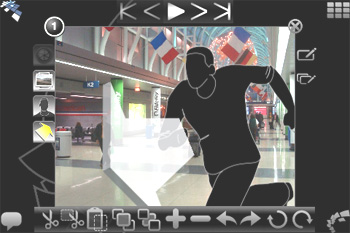

Being a cross-platform and open source app building platform, Xamarin offers a development ecosystem with backend, API, components, etc. This native platform is introduced by Microsoft. Xamarin is one of the top mobile app development frameworks and it is. This community-driven JS library was introduced by Facebook in 2018. It also allows creating platform-specific versions of various components allowing easy using of single codebase across various multiple platforms. With React Native, you can develop rich applications for both iOS and Android. React Native is the best JavaScript library to build native applications for all devices and platforms. Full direct access to Android & iOS APIs.Many leading companies love using Native Scripts for its strong web empowerment platform. Native Script is a preferable framework to reduce the code and time of the app loads on the system. Native Scripts is an open-source framework to create native mobile applications empowered with Angular, Typescript, JavaScript, CSS, and Vue.js. Become a loyal shopper with a loyalty card.If you don’t get any result from it, 6-month service is free. Besides, it has another 6-months of success guarantee scheme. Using Swiftic is a convenient option as you get 30 days money-back guarantee option for all its plans. It is featured with an easily navigable interface. Swiftic is one of the best mobile app development frameworks available in the iOS platform. Let’s understand some of the top mobile app development frameworks, which make app development simple: 1. The mobile app development market is growing at a rate of CARG 14% and expected to touch 100 USD Billion by 2022. These are known as location-based services apps that are driving the app generation today.īehind the scene of such intrigue applications, there are thousands of mobile app development frameworks, which are striving to give you the best user experience at your fingertips. Have you ever wondered what are the things used in making all such mobile applications that make your life much easier? From waking up in the morning till reaching office on time, everything happens over some finger taps on some beautiful mobile applications. Everyone like Jessica is using multiple mobile applications to make life easier. This is just a gist of a few morning hours of Jessica’s app-dependent life. To go even deeper, lets walk-through that first option and show what is needed to implement the VisaCheckoutButton.Jessica is a millennial who wakes up every morning with her Apple watch vibration and quickly order breakfast from the Uber Eats before rushing to work in an Easy Taxi. In this case, we recommend using the hybrid plugin implementation to avoid issues with third-party cookies getting blocked. You have a native app mostly consisting of WKWebView instances that contain your existing web application that is already integrated with the Visa Checkout web SDK.In this case, we recommend using the custom checkout button implementation. You have a native app with native components and would like to add VCO to your app, but would like to use your own button to actually launch VCO.In this case, we recommend using the VisaCheckoutButton

You have a native app with native components and would like to add Visa Checkout (VCO) to your checkout or shopping cart screen.Once installed, there are 3 primary ways you can use the SDK, depending on your use case. framework file to your Xcode project, details can be found in our documentation, located in the assets zip you can download from the Visa Developer Center Of course, there is a manual option which involves adding the. Installing the SDK is very simple if you go the route of CocoaPods, details can be found here. Our Android and iOS SDKs are very similar in functionality, so I'm choosing the iOS platform and Swift to dig into the details. UI is consistent across iOS, Android and Web With the use of the Visa Checkout web code, we get that consistent, familiar experience, immediate updates, smaller SDK size, and less time spent by merchants manually upgrading our SDK in their apps. We accomplish this with our hybrid architecture, meaning our SDK allows merchants to configure and launch Visa Checkout with native code, but after that, the SDK presents the web experience to the user. In their current iteration, a focus has been consistent look and functionality across multiple platforms. Whether for iOS or Android, the mobile SDKs have allowed merchants to easily integrate a payment option into their existing apps. One way we've done that is with the Visa Checkout Mobile SDKs. With mobile commerce on the rise, Visa has been active in simplifying the payment process. Furthermore, mobile commerce is predicted to account for more than 50% of all online sales in the next couple of years(2). Ecommerce has grown to be a massive source of revenue, bringing in $517 billion to U.S.


 0 kommentar(er)
0 kommentar(er)
